Ryan Hall's Blog, page 147
July 24, 2017
Injury-Proof Your Body With This 10-Minute Strength Routine
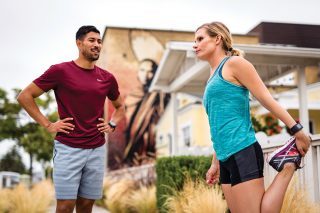
Below is a 10-minute, do-anywhere, run-specific strength routine that works the glutes, hips, obliques, lower abdominals, quads and hamstrings.
Do this whole routine two to three times per week (ideally, never before a run). More advanced runners—or those who are particularly injury-prone—should complete two sets.
RELATED: This Training Structure Is The Key To Injury-Proofing Your Body


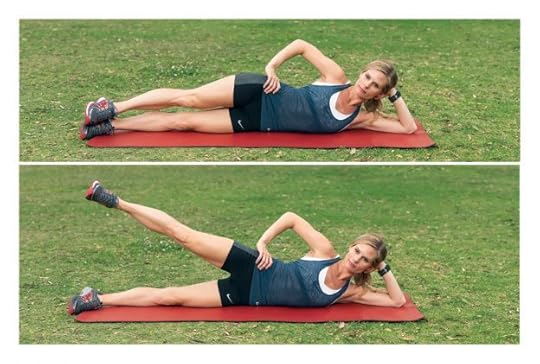
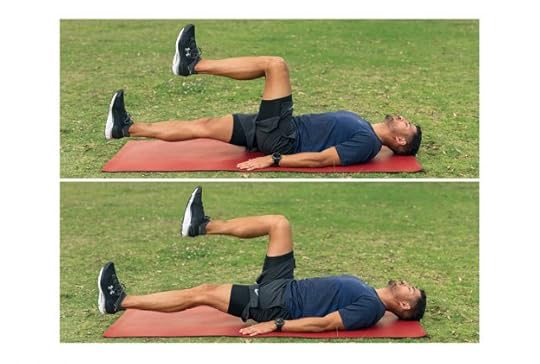
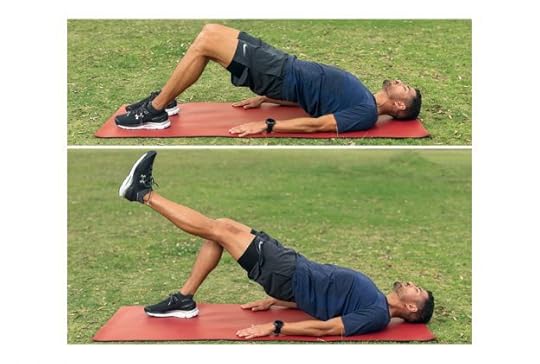

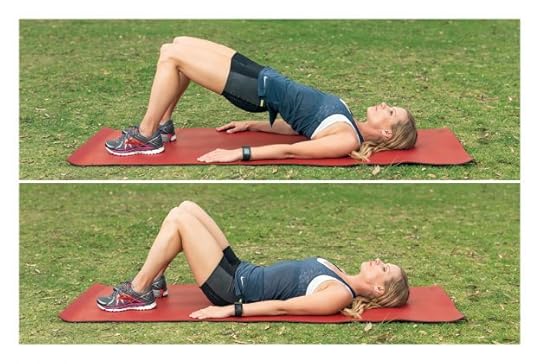
The post Injury-Proof Your Body With This 10-Minute Strength Routine appeared first on Competitor.com.
This Training Structure Is The Key To Injury-Proofing Your Body

Photo: Nick Isabella
If consistency is the secret sauce to successful running, what is the top reason for failure? The answer, of course, is injury.
Depending on the study, about 60 to 75 percent of runners reportedly get injured every year. In other words, a higher percentage of runners will get injured this year than pro football players! The silver lining is that most running injuries are not long-term, permanent or career-ending. And the best part is that most of them can be prevented from happening in the first place.
Some of the most common injuries—IT band syndrome, plantar fasciitis and Achilles tendinitis—are repetitive stress injuries, meaning they are the culmination of repeated stress over a long period of time.
To combat injuries, you must first make sure that you’re running with sensible progressions of mileage—and mixing in both long runs and faster workouts. This removes one of the most common reasons for injuries: training errors.
Next, you should strengthen the body with runner-specific exercises to guard against the repetitive impact forces of running.
The result? You become a healthier, stronger— and faster—runner!
RELATED: How Running Surfaces and Speed Influences Your Risk Of Injury
Training Structure 101
The first step is to not succumb to the “Three Toos” of running: too far, too fast, too soon. This might be more important than any other element of prevention.
While you can structure your running schedule in countless ways, there are universal truths every runner must remember:
Always start where you are, rather than where you were or where you’d like to be.
Give yourself enough time to train effectively for your goal race (rushed training is risky training).
Build mileage gradually by adding about 5–10 percent every two weeks.
When in doubt, sit it out! Don’t turn niggles into injuries by being stubborn.
Every fast workout should have a purpose and be appropriate for your ability.
This is simple stuff —but often, it’s hard to execute. Many runners are Type-A personalities who need to hit a certain mileage, long run or workout split. We’re numbers people.
But training is not always linear. Nor should it be! Sometimes it’s necessary to run less overall mileage or reduce the intensity of a workout. Other times, a long run should be cut short. Listen to your body and err on the cautious side. You might occasionally lose a few miles—but that’s better than missing weeks or months of consistent training.
Strong Runners Are Healthy Runners
Once the general training structure is established, runners should then focus on getting stronger.
Running is catabolic. It breaks down muscle at high enough volumes and intensities. But strength training is anabolic. It builds muscle.
To prevent injuries, runners should focus on basic, compound movements in the gym like squats and dead lifts. These are highly specific to running and provide a lot of strength gains. But just as important, runners should include glute- and hip-oriented exercises since these two muscle groups are the main drivers of the running stride. Weakness, imbalance or poor firing patterns in these muscles are also main contributors to injuries.
RELATED: Injury-Proof Your Body With This 10-Minute Strength Routine
The post This Training Structure Is The Key To Injury-Proofing Your Body appeared first on Competitor.com.
Can Antidepressant Medication Affect Your Running?

If you are taking—or thinking of taking—antidepressants, what should you know about how it can affect your performance? Talking to your doctor is the first step.
“It’s important to note that, as with all other classes of psychiatric medications, antidepressants have only been studied in athletes in small studies of short duration, so there’s not a lot of research at the moment that can clearly indicate what, if any, impact they have on performance,” explains Dr. Simon Rego, Chief Psychologist at Montefiore Medical Center/Albert Einstein College of Medicine in New York. “Therefore, the discussion with their doctor should be about the relative costs and benefits of starting them; for example, if they improve mood/energy/motivation, it may help with performance. If it is a professional athlete, it’s important to make sure they are not on a monitoring list of banned substances.”
Of course, it is important to note that antidepressant medications aren’t the only solution. When talking with your doctor, you should also discuss skills that can be learned to lessen feelings of anxiety and depression. Nancy Rappaport, part-time associate professor in Psychiatry at Harvard Medical School notes that this involves becoming familiar and aware of the thoughts that can make you feel worse or bring on feelings of anxiety or depression.
“Antidepressants can help you function better if you are sick enough to warrant a trial,” she adds. “Someone who may benefit from a trial of medication may not be sleeping, lose weight or gain weight and have low energy. If these symptoms improve, they may have better running performance.”
RELATED: 10 Mental Health Benefits Of Running
The benefits of the medication—such as improved sleep—don’t happen to everyone, however, so discussing any negative side effects that can occur is important. If you experience suicidal thoughts, a dramatic change in personality with increased irritability or pressured speech, you should notify your doctor immediately.
Before you start taking medication, understanding the pros and cons are key. Knowing all of your treatment options can help you treat your depression or anxiety from multiple angles. Of course, exercise has been found to be a great alternative method to lessen the affects.
“Getting outside at least half an hour and exercise is very helpful,” shares Rappaport. “When patients are anxious or depressed they can have low energy and then drink coffee. Than they can have a tough time sleeping. Exercise can make people feel better and sleep better.”
Of course your decision to take antidepressants should not be based on performance alone. Though runners do have some other factors to consider when it comes to the side effects, as well as pros and cons of treatment, taking care of your mental health is not something to be taken lightly.
“Don’t forget the big picture—while performance is important, treating anxiety and depression is just as important,” stresses Rego. “If medications are not possible, there are a number of non-medication, psychological treatments, such as cognitive behavioral therapy (CBT) that the research has shown to be just as effective as medications for anxiety and depression.”
For more information, you can visit the Anxiety and Depression Association of America for free resources.
RELATED: Why Running Is Good For Addiction Recovery
The post Can Antidepressant Medication Affect Your Running? appeared first on Competitor.com.
The Science Of Cramping Might Be In Your Head (And Stomach)

Nothing cramps your running style like a … well … a cramp. Rarely are they bad enough that you have to pull out of a race or completely stop a run. And yet cramping on the run never seems mild enough that you can just power through without any interruption.
In a word, cramps are: annoying, vexing, bothersome, loathsome, irritating … OK, that’s five.
But did you know that recovering from cramps, minimizing their damage or even preventing them all together could actually be in your head? Well, sort of. Your digestive tract is involved too.
At least that’s what the folks at HOTSHOT are banking on. The Boston-based company is diving into the neuroscience behind cramping. Gone are the days of the high school gym coach in the undersized shorts with the oversized whistle telling you to just eat more bananas.
Nothing against the good people at Chiquita, but that conventional wisdom is from a bygone era.
The major contributors to cramping are conditioning (or lack thereof), hydration/electrolyte balance and neural stimulation. It’s that last one that HOTSHOT is focusing on.
These days it’s about neuromuscular performance—in other words, how your brain and muscles communicate. In the human mouth, stomach and esophagus there’s something called the Transient Receptor Potential channels (TRP). Cramps are believed to occur when hyperactive motor neurons send repetitive signals to the muscles. The end result is a cramp.
Stay with me …
The folks at HOTSHOT postulate that by activating the TRP channels through its spicy formula, it will send impulses through the spinal cord to inhibit the repetitive signals being sent to the distressed muscle.
In layman’s terms, it’s a liquid shut-off switch.
RELATED: How to Beat Marathon Muscle Cramps
This idea to focus on neuromuscular performance came about when Nobel Prize-winning neuroscientist Rod MacKinnon, who is also an endurance athlete, was ocean kayaking (like, can’t-see-land-anymore-ocean-kayaking) with Harvard Medical School neurobiologist Bruce Bean. At some point, both started cramping in their forearms, and thus neither could help the other. Fortunately, swells weren’t bad and the sharks weren’t circling and both were able to eventually continue unscathed. But as they sat adrift, it was an ah-ha! moment to tackle the cramping issue from a neuromuscular angle. HOTSHOT is the result.
The proof of concept already exists. And triathlete Tim Reed swears by its results. Reaching the podium was an issue for the Aussie—who categorizes himself as a “twitchy, crampy sort of guy.” He started using HOTSHOT before he became one of their endorsed athletes because he said the results were substantial. In the one year he’s used the product, he’s gone on to win the IRONMAN 70.3 Asia Pacific Championship, IRONMAN Australia and the IRONMAN 70.3 World Championship. The company has also paired with IRONMAN and is available on course.
“It’s been a real game changer,” said Reed, who visited the Competitor headquarters in San Diego last week. “I seem to be far more prone to cramping than most people. I had tried everything—from different conditioning of the muscles, maintaining a better electrolyte balance, fascial release and much more. I saw a few minor improvements, but definitely no breakthrough results until HOTSHOT.”
Bob Murray, the co-founder and director of the Gatorade Sports Science Institute from 1985-2008, is also working with the HOTSHOT team and told Competitor that studies to determine HOTSHOT’s ability to increase performance and aid recovery are expected to be completed by the end of the summer. They are also expecting their first patents in the U.S. and Europe to come through in 2018.
It’s also noteworthy that the brand isn’t just for endurance athletes. It’s made its way into the NFL space and is also being used for medicinal purposes for patients with muscle disorders who suffer from cramps.
The post The Science Of Cramping Might Be In Your Head (And Stomach) appeared first on Competitor.com.
The 5 Worst Smells Encountered While Running

We have all been there. You are standing among hundreds of runners at the starting line of a race, waiting for the signal to begin. Somehow you find yourself placed next to a woman who decided to pile on the perfume. Perfect. When we run, we breathe in so deeply that smells affect us much more than if we were to encounter them out of the context of exercising.
Here are some of the worst smells that can be offensive while out on a run.
Body Odor
No one enjoys body odor at any time. But when I’m racing and get behind someone that has forgotten their deodorant that morning, it sometimes makes me want to gag.
Perfume
As I stated before, perfume really bothers me while I’m racing. I am a fan of perfume on a normal day, but running through a thick cloud of it can almost stop me dead in my tracks. Save your spritz of fragrance for post-race.
RELATED: Running Gear That Stops The Stink Before It Starts
Smoke
When I’m running down a rural road, and people are burning yard debris or the leaves in their ditches, I try to hold my breath and sprint past the giant gray cloud. This also goes for smokers that pass me in their cars or on foot. It’s hard to believe that one cigarette can create so much odor when you are out in the open air, but it seems to hang in the air forever.
Dead animals
During the summer, when the ditches don’t get mowed down on a regular basis, dead animals can be completely hidden in the tall grasses. You don’t know they are there until you run right up on them. On a hot and humid day, the odor from one of these rascals can be enough to knock you down!
Manure
Living in a country setting, it is a commonplace to have farmers spread manure on their fields several times a year to help the crops grow. Smelling it when I’m in my yard is not bad. However, while running, it can completely be overpowering at times. I have grown used to it, but there are those really hot days where it brings tears to your eyes. City and suburban folks are not immune from this smell either, especially during springtime.
I’ve learned a trick to keeping some of these smells at bay when I’m out running. A small layer of Vicks Vapor rub right under the nostrils can make everything smell much better.
RELATED: 11 Truths New Runners Must Accept
The post The 5 Worst Smells Encountered While Running appeared first on Competitor.com.
July 23, 2017
13 Tips For The Aging Runner
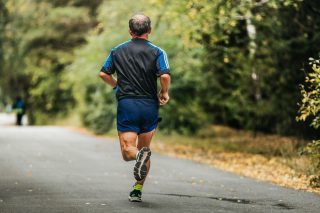
A wealth of documentation proves that running well into Grand Masters age categories brings far more benefits to the body than risks, particularly since the reality of degeneration is inevitable. Running can delay and reduce many of the impacts of aging in exponential measure. A Stanford University study supports these anecdotal conclusions. Master runners who experienced heart disease, diabetes, high blood pressure, some cancers, and neurological ailments had those ailments on average 16 years later than non-runners. As a group, they experience better mobility, coordination, weight control, bone density, muscle strength, and an overall sense of well-being. So forget the calendar years and bring on the future with these tips for success as a senior runner:
For your body
1. Take extra care in selecting your shoes. Fit seniors tend to have lower body fat. One place of critical effect is reduced padding on the bottom of their feet. It’s a good idea to get fitted at a specialty running store. Don’t hesitate to ask to test newer cushioned rides.
2. The fit of your running gear is key to more than just comfort. With your body softening around the edges, the size of your jog bra and style of your shorts shouldn’t be left to chance. Bouncing isn’t fun for men or women.
For your performance
3. STRETCH before and after every run. Every run. Every run.
4. Pay attention to your body signals, and act on them. Don’t try to tough it out and run through specific pains or illness.
5. Plan rest and recovery days. Don’t cheat on them by doing yard work or garage cleaning. Rest (and specifically adequate sleep) gives the body time to actually strengthen itself.
6. Vary the workout. Running is joyful, but some yoga, swimming, cycling and hiking can maintain fitness while balancing the specific body-part, muscle-group exertion.
7. Choose less (but higher quality) speed workouts and more sustained distance/time efforts to counter the natural decline in aerobic capacity.
RELATED: What Is The Best Age For Running Marathons?
For your mind
8. Senior runners can typically take the time to enjoy many more of the fringe benefits of running. This helps to keep motivation, satisfaction, and general well-being high.
9. Consider scheduling a race every so often to set a timeframe for fitness preparedness and to be able to work towards achieving measurable goals.
10. Join a running club to add the special social aspects and camaraderie to your running.
11. Plan a family run. Add it to the next family reunion, wedding event, graduation get-together. See what setting a great example introduces.
12. Pick running courses and race venues that will take you to new places and different vistas. Make your run an adventure.
13. Volunteer at a running event on your rest day. The excitement will be contagious and a great motivator.
Regardless of the reason for lacing up a pair of running shoes, masters runners are making strides in achieving the greatest physical and mental well-being possible. For an overall excellent quality of life, hit the roads and trails.
RELATED: Wise Tips From Masters Runners On Staying Fit and Injury-Free
The post 13 Tips For The Aging Runner appeared first on Competitor.com.
July 21, 2017
5 Rules To Help You Run Strong In The Summer Heat

The weather is hot…but your running is not. Don’t stress. There are biological reasons you’re slow on those first hot days. All of a sudden, your body has to turn its natural air-conditioning system—sweat—up to full blast. And just as cranking AC up takes a toll on your home energy bill, the sudden heat change costs your body extra energy too.
If you’re training consistently, your body is used to delivering blood and oxygen to your working muscles. On hot days, you’re asking it to deliver blood to the skin too, so it can shed heat, create sweat and chill you out. The price of this sudden multitasking is that your body says, “Hey! Slow down!” until it gets the hang of doing both things at once. It can take as long as two weeks to get good at it.
To acclimate to this new oven you’re living in and get your running on track, use the following strategies on your body and your workout.
Keep Your Body Cool
Wear the right stuff.
Got a sleek new fitted running tank? Today’s not the day for it. You want a tech shirt that ’s a little loose in the torso, so any type of breeze—from what you’re generating when you run to any ambient air movement can get in there and evaporate your sweat, says Roberto Mandje, manager of runner training, education and products at New York Road Runners. The exception: high-tech cooling sleeves. “It looks counterproductive to have a tank top and sleeves on,” he says. But these can be useful for wicking extra sweat away from you, he says, and many have UPF sun protection built in. And don’t forget a hat or visor.
Put water in you before you put it on you.
Scientists say that drinking water is a first choice over dumping it over your head. In fact, pouring it on your head can make you feel cool and run faster—which makes you produce more heat and could run you into heat exhaustion if you’re not paying attention. Not only do you not want to get dehydrated for your health’s sake, it can also affect your running performance. Even if you don’t need a lot of water on a regular day, you do on a hot one.
RELATED: 7 Accessories To Help You Adjust To The Heat This Summer
Keep Your Workout Smart
Make friends with the gym—or the morning.
Speed work in the heat won’t do what it’s supposed to, since you can’t hit your splits. Take it indoors or get used to doing your workouts early in the morning when the day is coolest, says David Allison, founder and head coach of Marathon Coaching in Phoenix, where triple-digit temps are common. Bonus to getting up crazy early: Ozone levels tend to be lower.
Train by effort.
All those extra demands on your body drive your heart rate up higher than usual when you’re out in the heat. So, for instance, you might be doing 7:15-per-mile pace at an effort that used to turn in 7-minute miles, and you have to adjust your expectations, says Mandje. Focus on feel, not what your watch says.
Break it up.
If you’re training for an important time goal and hitting your splits is critical, break up your workouts, says Randy Accetta, director of coaching education for the Road Runners Club of America. “If, for example, you were supposed to do 5×1 mile, do 10×800 instead, and cut yourself some slack during the recovery,” he says. “Stand in the shade and drink fluids. Expect to still be slower—studies show it could be 3 to 19 percent slower than usual—but do the effort and turnover as best you can. And don’t think you’re a horrible athlete because you can’t manage it perfectly.”
These coaches all agree, if the heat bothers you: Don’t freak out. If you train smart and hydrate, you’ll get your groove back.
RELATED: Why Runners Should Train In The Heat
Know the Signs of Heat Illness
If you’re sweating heavily but your skin feels cold and clammy, you feel weak, have a fast, weak pulse, and have nausea, vomiting or feel faint—symptoms of heat exhaustion—get to a cool spot, lie down and loosen your clothes, while applying cool, wet cloths to your skin if you can. If, however, you have a super-high body temperature (above 103) and your skin is hot, red and especially if it’s dry, you’re at risk of heat stroke. Ask someone to call 911.
The post 5 Rules To Help You Run Strong In The Summer Heat appeared first on Competitor.com.
Americans Hasay And Rupp Will Race Chicago Marathon

Hasay and Rupp race the 2016 Boston Marathon. Photo: Photorun.net
Yesterday, the elite field for the 40th annual Bank of America Chicago Marathon—taking place on Oct. 8—was announced and two top Americans are set to lead the pack.
Two-time Olympic medalist Galen Rupp and American marathon debut record holder Jordan Hasay will compete against a deep field. On the men’s side, this includes NCAA champion and record holder Sam Chelanga, Luke Puskedra, Jeffrey Eggleston, Aaron Braun, Diego Estrada, Andrew Bumbalough, and debut marathoners Chris Derrick and rising star Noah Droddy. The women’s race will see Becky Wade, Sarah Crouch, Alia Gray, Danna Herrick, Dot McMahan, Kristen Heckert and Michelle Lilienthal toe the line.
Rounding out the elite field is 1984 Olympic gold medalist and 1985 Chicago Marathon champion Joan Benoit Samuelson, who will toe the line in an attempt to set an age-group world record.
“Storytelling is important to me and it’s how I motivate myself,” Samuelson said in a press release. “My race decisions often reflect my narrative. Once I turned 60 I knew that the Oct. 8 Chicago race would represent the next chapter in my career.”
This World Marathon Major race hosts more than 40,000 runners from more than 100 countries and all 50 states, while an estimated 1.7 million spectators line the streets of the Windy City.
RELATED: 5 Reasons Why The Chicago Marathon Rocks
The post Americans Hasay And Rupp Will Race Chicago Marathon appeared first on Competitor.com.
July 20, 2017
How To Start Running Again After A Short Break In Training

Training for a distance race takes months of commitment. So it’s not surprising that there are times where you miss a run…or multiple weeks of runs. We often expect injuries to derail our training, but most of the time we take a short break because of other life commitments.
Busy schedules often call for runners to readjust their priorities. That means some weeks running can get moved further down our to-do list—or knocked off entirely.
Whether it’s work, family, brief illness, vacation, or just a short burn out, we have all missed a few goal runs in our training schedule. However, there is a big difference between just missing quality days (workouts and long runs) and not running at all. So can you hop back into your training plan after a short break or should you start looking for a new goal race? Follow our plan below to see where your training fits in.
You skipped 1-2 weeks worth of workouts but still did easy runs
If you missed one week of workouts or long runs, but still got in a few miles, don’t panic. Just move on to the next week of your training plan.
“If you missed your big days, just continue on,” says John Kenworthy, head men’s and women’s cross-country and track coach at Siena College in Loudonville, N.Y. “Don’t try to make up anything you missed, but don’t feel like you need to adjust training for the next week.”
If you miss two weeks of quality runs, return with a slightly more conservative approach. Run 1-2 easy days before moving back into normal mileage. The most important step is to listen to your body. See how your legs respond to easy runs before deciding when to attempt a workout.
“If you haven’t done a workout or a real long run, but you’ve run 4-8 times during those weeks off, then it’s really just about getting some good runs in before you decide to work out,” says Kenworthy. “It could only take 4-5 days, but it could also be 7-8 days, depending on how your body bounces back.”
You haven’t run at all in 1-2 weeks
Even if you’ve been unable to lace up your shoes at all, runners shouldn’t let go of their goals just yet. The first step is to slowly build your mileage. If you have only missed one week, start out with 1-2 easier runs. Kenworthy notes that it shouldn’t take runners long to feel comfortable at their previous training volume.
“It might take a day or two to get your body back moving. At the end of the week, you should feel comfortable running your full volume.”
If you’ve taken a two-week break, begin with 4-5 days of easy running before moving back into your training schedule. Adjust your long run, so it is still your longest run of the week, but a bit shorter than what your schedule originally called for. By the start of your second week back, you should be back to your normal daily mileage and can probably complete a workout by week’s end.
RELATED: 5 Tips For Sticking With Your Training Plan
You skipped 3-4 weeks worth of workouts but still did easy runs
Good news: runners who have missed their quality runs for almost a month may still be able to race. Bad news: they will have to readjust their goals. With so many long runs or workouts skipped, it isn’t reasonable to expect to run a personal best.
“You’re probably in the position where you can make the decision to race if you give up on the idea of going after some sort of performance goal,” says Kenworthy. “You won’t necessarily be out of it preparedness-wise but you just might not have the fitness you want when that race comes around.”
Marathoners should use a bit more caution when deciding if they should still complete their race. This is especially true if your race is in six weeks or less. A better solution would be to find a shorter race to avoid injury.
Some runners would rather give up on their time goals for a race. If you want to be competitive and set a personal best, Kenworthy urges his runners to restart their training.
“It would be a better use of your time to look 16-20 weeks and find a new race, than to reset your time goals”
RELATED: How Many Weeks Do You Really Need To Train For A Marathon?
You haven’t run at all in 3-4 weeks
“If you miss 3-4 weeks cold turkey, then your mindset should be I just took a good biannual break. And then I’m going to start looking at races that might be 16-20 weeks out,” says Kenworthy.
After a month-long break, it is not advisable to pick up where you left off in your training plan. Instead the healthier option, both physically and mentally, is to start over. Wait until training better fits into your life and pick a new race goal that you can fully commit to.
If you really don’t want to bail on your race, you can run it for fun—as long as it is a half marathon or less. After a month off, you are more susceptible to injury if you go from zero to 13.1 with nothing in between. Check with your race to see if you can defer to next year.
Just remember training plans are written in pencil, not pen. Sometimes readjustments are needed. Running isn’t always the most important thing in life. But when you are ready, there will be a new goal race out there waiting for you.
RELATED: 5 Things The Most Successful Runners Do Every Day
The post How To Start Running Again After A Short Break In Training appeared first on Competitor.com.
This Hill Workout Will Help You Finish Your Next Race Strong
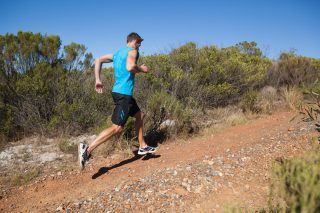
One of my pet peeves is hearing people talk about not having any speed at the end of a race. Granted at the top level in tactical races, the runner with the best sprint tends to win the day. But for most people hanging on for dear life in an all-out effort, the ability to finish off a good race has more to do with strength than speed.
At the end of a tough race, your body is tired, so it needs to be strong to produce top speed. But your body is also working at close to VO2max, aka your aerobic capacity, before you even try to sprint, so you also need good oxygen uptake and some anaerobic tolerance. You get strength from long runs on the hills, and you develop VO2 max and anaerobic tolerance by doing good speed work. But to develop the ability to finish fast, you have to develop all facets at once. How? Intense hill work!
If you are training for runs longer than 10K, then hill repetitions at anaerobic threshold are useful, because they emphasize endurance. If you are training for distances up to 10K, hill reps at VO2 max emphasize maximal oxygen uptake more than endurance.
RELATED: How To Become A Beast On The Uphills
The Workout
Time | Distance Description
10 min.—Easy running RPE 1 (Easy effort; Slower than normal training pace), with a few moderate sprints RPE 2
(Moderate effort; Normal training pace)
4–6 × 5 min.—For 10K training: uphill running at RPE 4 (Hard effort; 10K race pace). Jog downhill between reps.*
10 min.—Easy running RPE 1
*NOTE: If you are training for a 5K or shorter, try 6–8 × 2-min. hill reps at slightly harder than 5K effort.
The gradient should not be super steep: a hill that allows you to run close to normal training pace at this intense effort is best so that you’re able to retain something close to normal running form. This session should be done as part of your tempo and speed-work training but never within two weeks of an important race. Recovery is important, so never do more than one of these sessions per week.
About This Book
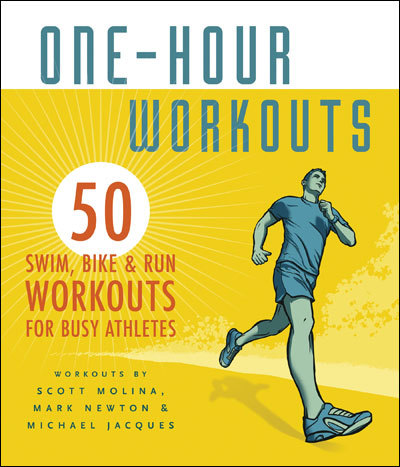
One-Hour Workouts
50 Swim, Bike, and Run Workouts for Busy Athletes
Scott Molina, Mark Newton, and Michael Jacques with Amy White
50 swim, bike, and run workouts that take 60 minutes start to finish.
The post This Hill Workout Will Help You Finish Your Next Race Strong appeared first on Competitor.com.
Ryan Hall's Blog
- Ryan Hall's profile
- 21 followers



